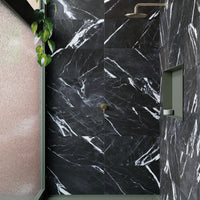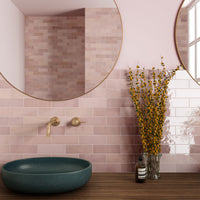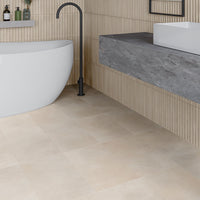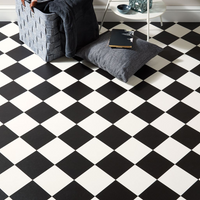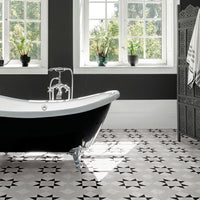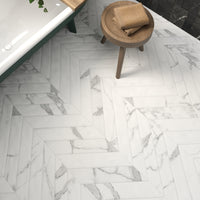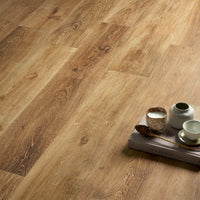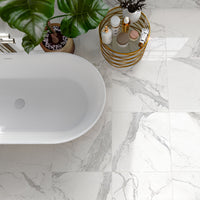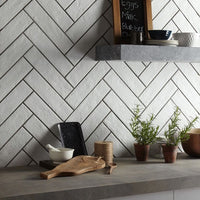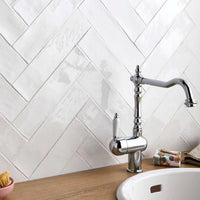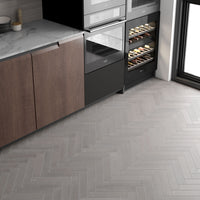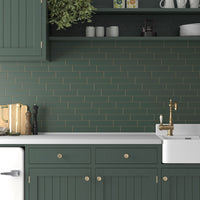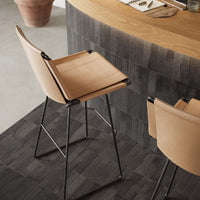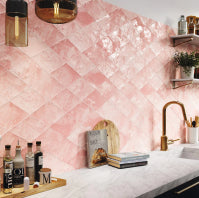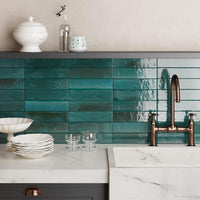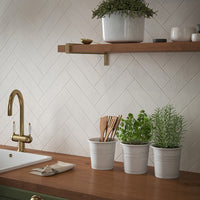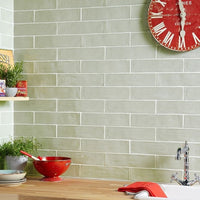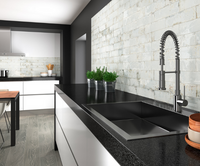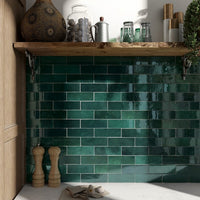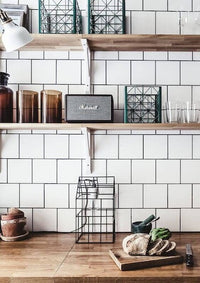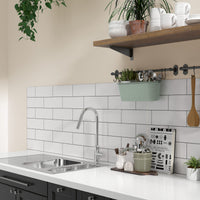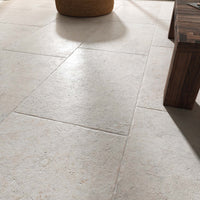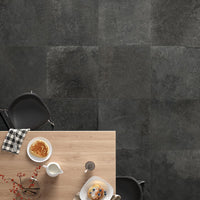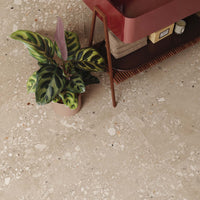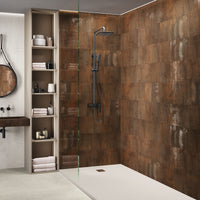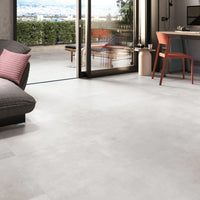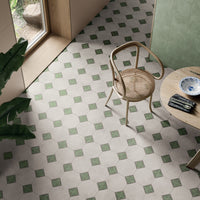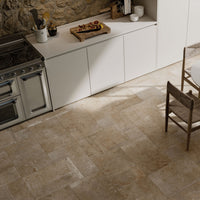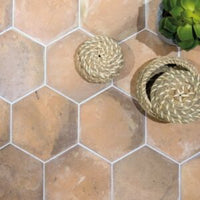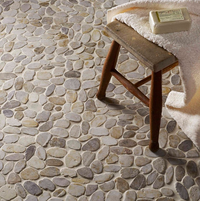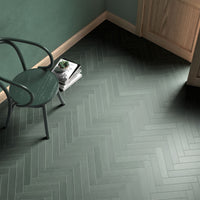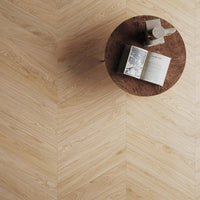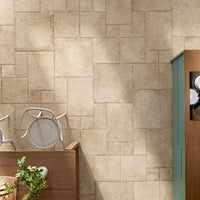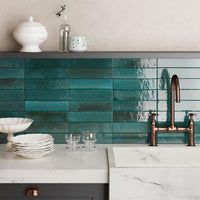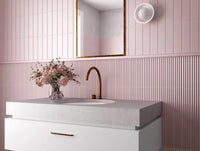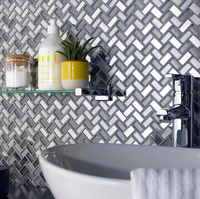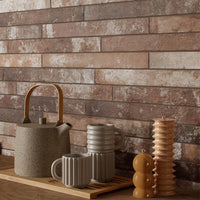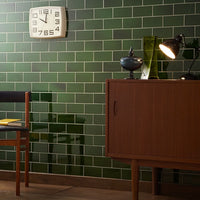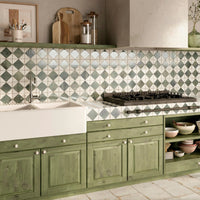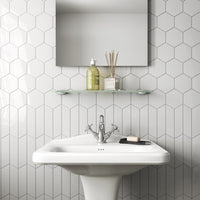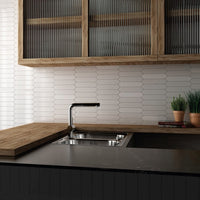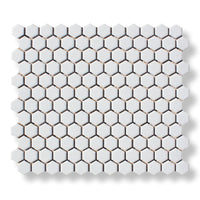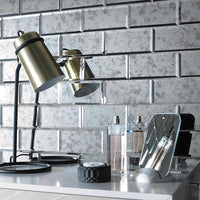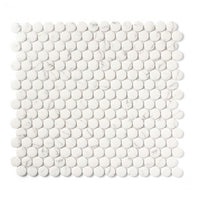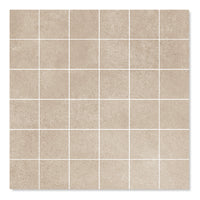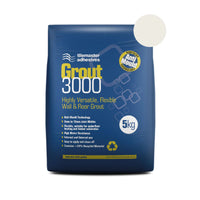While not as common as suspended timber floors, concrete slabs are often used for ground floor structures in the UK. This means that, whether you’re undertaking a new-build project or renovation, there’s a relatively good chance you’ll be tiling onto concrete.
This guide will take you through all you need to know, ensuring a stress-free project with a high-quality finish.
Can I tile onto concrete?
Yes! Cured concrete is strong, stable and usually pretty flat. So in other words, it’s the perfect base to tile onto. After all, porcelain tiles love a rock solid base!
How to prepare a new concrete floor for tiling
Before we jump into the in’s and out’s of tiling a fresh concrete slab, it’s important to confirm two things:
- That your slab is indeed concrete. Some solid floors may actually be anhydrite screeds, which should be treated differently
- That your slab is sufficiently dry
Freshly laid concrete should never be tiled onto immediately. Instead, you should allow the the concrete time to cure, settle and harden. As a rule of thumb:
- Allow one ‘drying’ day per mm thickness, up to a depth of 50mm
- Allow two ‘drying’ days per mm thickness, after a depth of 50mm
So if your slab is 75mm thick, you should wait 100 days before you start tiling.
Otherwise, water in the concrete slab can’t evaporate and will settle between the tiles and the surface of the concrete. This may cause the adhesive to weaken over time, causing tiles to come loose or crack. Consult your slab installer if you don’t know how thick your concrete base is.
You can use a digital hygrometer to test the Relative Humidity - or moisture content - of your floor. According to British Standards, your slab should have a Relative Humidity reading of 75% or less, before you can tile.
Once you’ve established that your concrete is sufficiently dry, it’s time to prepare for tiling. This means that your slab should be free of laitance, cleaned, sealed and levelled, if required:
- Laitance is a fine layer of cement dust that appears on the surface of the concrete as it dries out. If this isn’t removed, the adhesive may not adhere correctly, causing the floor to fail over time. You can remove laitance in a number of ways - shot blasting machines are generally the quickest method for large areas, whereas handheld grinders are better suited to smaller areas.
- Once the laitance is remove, the slab needs to be completely free of debris and dust. Use a brush to sweep away any dirt before vacuuming the whole floor space.
- Next, use a brush or roller to seal the concrete surface with Tilemaster Prime Plus, diluted 1 part to 3 parts water. If required, you can apply a second coat once the first coat is touch dry - apply this second coat at 90 degrees to the first coat.
- If required, you can now apply self-levelling compound, to smooth out any dips or hollows in the slab and give you a flat, level surface for tiling. Remember to use a spiked roller to evenly spread the self leveller and then to prime the self-leveller before tiling.
At this stage, your concrete slab is ready for tiling. We recommend using high quality products such as Tilemaster Rapid Setaflex tile adhesive.
Please read our article on Installing Floor Tiles, for further guidance.
How to prepare an existing concrete floor for tiling
If you’re undertaking a renovation project, you may already have a concrete slab in place. By and large, the preparation and installation process is the same as for a new concrete slab. However, there’s a few points to bear in mind:
- Is the slab clean? Any surface treatments such as paint or sealers will need to be mechanically removed.
- Is the slab dry? While an old slab should have fully cured, you’ll need to confirm there are no damp issues.
- Is the slab damaged? Any cracks will need to be addressed and repaired, as otherwise they will cause tile failures further down the line.
- Is the slab level? If not, you will need to use a self levelling compound to smooth out any irregularities and depressions.
- Is the slab hard? Try scratching the surfaces with a trowel. If the surfaces gives way, you will need to grind it back until you reach a harder slab.
Do I need to use an anti-fracture mat with my concrete slab?
Although you can lay tiles directly onto concrete, we do recommend using an anti fracture mat - especially if:
- Your slab incorporates underfloor heating
- You’re using large format tiles
- You’re tiling a larger area
These mats help to minimise the risk that your tiles may crack, by isolating them from the concrete base. You can apply our Tilemaster Anti-Fracture Mat with a thin bed of Rapid Setaflex adhesive adhesive and begin tiling almost immediately.
What happens if I have underfloor heating in my concrete slab?
You may have underfloor heating pipes that are buried into your concrete slab. If this is the case, your heating system will need to be carefully commissioned before you can start tiling.
This is usually a slow process, with the temperature of the system being gently increased over a period of time - it’s best to ask your slab installer for their advice.
We also recommend using an anti-fracture matting system as described above, to cope with additional stresses that arise from changes in temperature.
Do I need to prime my concrete slab before tiling?
Yes, you should always prime your concrete slab before you tile, for two reasons.
- Firstly, concrete is very porous. A primer is designed to soak into and seal the surface, enhancing the bond with the tile adhesive.
- Secondly, concrete surfaces tend to be quite dusty. A primer reduces and seals this dust, giving you a better ‘key’ to tile onto.
We recommend using Prime Plus, diluted 1 part primer to 3 parts water. If your concrete slab is very porous, a second coat of primer may be required.
Please note that you should never use PVA as a replacement for tile primer.
Can I start tiling a new concrete floor immediately?
As we have discussed, a new concrete slab must be allowed to cure and dry out before you can start tiling. Otherwise the effect of the concrete shrinking may cause tiles to crack or come loose.
However, some ‘fast track’ adhesives are available, which allow you to start tiling much sooner. Please contact us for further information.
Can I use electric underfloor heating mats on concrete?
Yes you can, although we recommend that you first install insulated tile backing boards to the concrete, so that the heat is reflected up into the tiles. Otherwise the concrete can absorb too much heat, making your system less effective and increasing heat-up times.
The backing boards can be installed using a thin 3 - 6 mm bed of Rapid Setaflex adhesive. Once you have laid the underfloor heating mats over these boards, we would advise pouring a layer of self-leveller, to make your tiling job much easier







